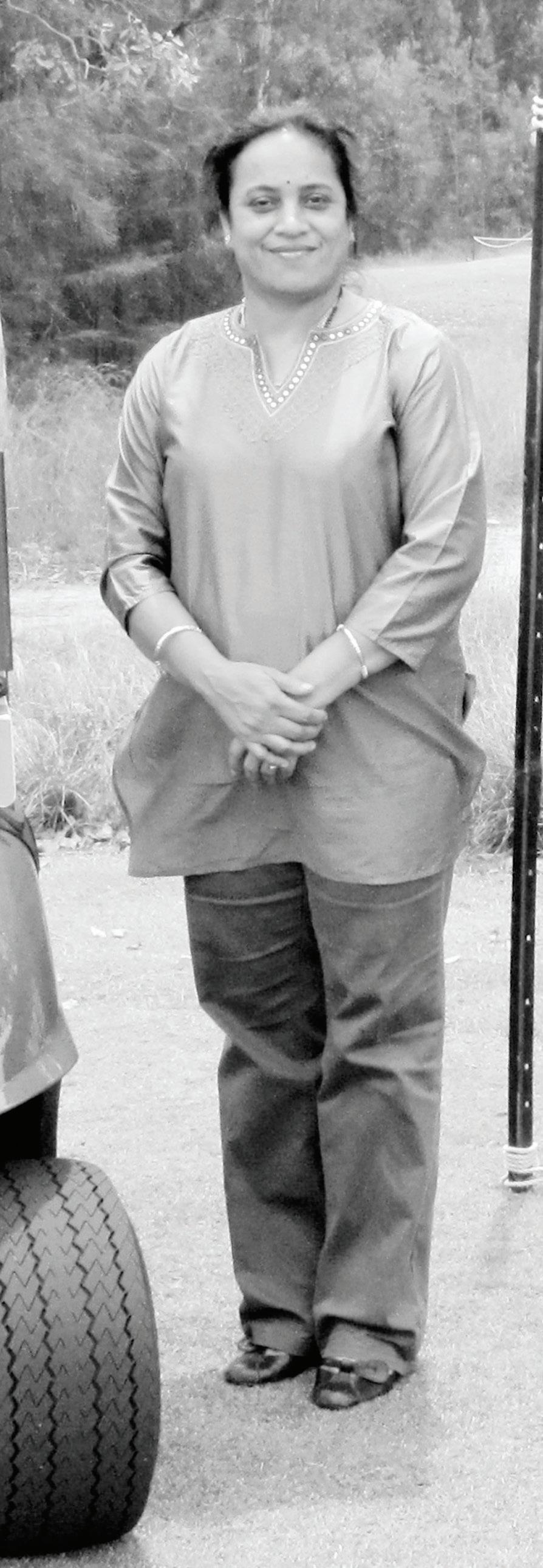
7 minute read
Unheard, but not silent
from 2011-04 Sydney (2)
by Indian Link
Gender bias supported by media hype has resulted in women students and their unpleasant experiences going unsupported and suppressed
BY TIM BLIGHT
When an Indian newspaper reported in early March that Indian students were the happiest group of nonlocal students in Australia, it seemed almost natural that opinion was sought from a young Indian male. While the allegedly racist attacks on Indian students in Australia during 2008-09 were widely publicized in the media, news coverage of the violence was decidedly lopsided in its gender approach. Regardless of the motivations for the attacks, it would appear to an outsider that these were almost exclusively perpetrated against men. Of course, common sense dictates that this was far from true, however the question of gender bias in Indian and Australian media is not a new story.
An unexpected encounter
Alia (not her real name), a South Asian hospitality student, was attacked walking through Melbourne in 2009. After leaving her college where she was studying for the upcoming exams, she was walking to Flinders Street Station on a particularly cold winter’s night. Despite not being of Indian origin, her skin colour and appearance could easily have her identified as one. Like many streets in Australia after dark, this one was deserted and she soon became aware of a man following her. “I started to walk faster,” she says. “It crossed my mind, but I didn’t think anything would happen.” Soon, the man drew closer to her, and Alia began feeling nervous. “Then, suddenly, he came up behind me and grabbed me around stomach,” recounts Alia, with a haunted expression. “He was yelling at me and pulling my hair. I tried to get him off me, and I screamed. He let go and I ran to get to the main street.”
The Indian media is no better than the Australian media in this aspect; the experience of a female Indian student in Australia is a story which isn’t told as much as it should be.
Like many in the Indian and wider South Asian community, Alia is not fully convinced that her attack was racially motivated, noting that the man might have been mentally disturbed. However, considering the timing of the attack, it certainly did force her to consider her future as a student in Australia.

“It really scared me, and I didn’t go out for a couple of days after that, I was worried maybe he would recognize me,” she says.
Male-dominated media
Typically, the media seeks to provide news in a digestible format for its audience and while idealists claim that society is inherently egalitarian, a quick glance at nearly any medium reveals a strong gender bias. Domestic or social issues are often discussed on chat shows hosted by women; ‘hard’ news is often presented or hosted by men. Equally, on commercial television, noncontact sports such as tennis and netball are the domain of women, while rougher pursuits such as rugby and boxing are the realm of men. It’s all part of constructing man’s bravado and portraying women as somehow more sensitive. So it stands to reason that when violence and potential racism are unleashed upon innocent individuals, the media seek reaction from a male victim before they look to a female. It makes for great viewing, with the story told as an ‘honourable battle’ featuring heroic, virtuous warriors fighting morally bankrupt villains. Perhaps the audience even expects this type of story-telling.
The woes of stereotype
Does any of this matter? In the (supposed) age of gender equality, it should. The Indian media is no better than the Australian media in this aspect; the experience of a female Indian student in Australia is a story which isn’t told as much as it should be. This may be associated with traditional social strictures in both countries which sees a woman as equally vulnerable and defenceless, while also as the bearer of a family or a nation’s honour. An attack on a woman is a deep wound, cutting right to the core of a society, and as such, it makes for unpopular news.
Alia did not report her attack to the police because she felt her experience was not serious enough. She also didn’t relay the experience to her parents in case they panicked and pulled the plug on her course. This highlights a major trust gap which is perpetuated by and also fuels, media speculation about racism and violence in Australia. Many male and female Indian students in Australia lead a double life, working long hours in menial jobs, struggling to make ends meet and dealing with personal issues. Meanwhile, they must paint a rosy picture for their parents to allay concerns and prove that their gamble of moving to a new country to study is paying off. Men risk their parents’ ordering them back home for their safety and being relegated to a life in the family business, while for women the consequences are potentially far more serious. Although Indian society has progressed in leaps and bounds, many parents would still baulk at the thought of their daughter having an Indian boyfriend outside of wedlock. If their daughter were physically (or worse still, sexually) attacked abroad, college fees withdrawn, a flight home, an arranged marriage and a life of domesticity would often be the kneejerk antidote provided.
Below the surface
Roanna Gonsalves is a writer of Indian origin, who recently worked on a theatre piece based on the Indian student attacks. She also feels that Indian women are under-represented in reportage on this topic. “Silence should not be interpreted as bliss… we have all heard anecdotally about sexual abuse of female Indian students by their Indian employers, and we’ve all been aghast at the recent sexual assault and murder of Tosha Thakkar, a female Indian student in Sydney. This just points to the trauma that some women go through, but which we don’t hear about in the mainstream media. It’s all running below the surface,” says Gonsalves. She attributes this to the feelings of shame commonly experienced by victims of violence when thrust into the public eye, exacerbated by the isolation of being part of a minority community in Australia. Additionally, she points to social and cultural factors: “Many Indian women have been socialised into being seen and not heard, even when they have much to say. Possibly, the physical and emotional violence that female Indian students face here is a localised ‘application’, if you will, of something that’s global. That is, sexual abuse, marriages of convenience, etc., are not particular to the female Indian student experience in Australia, but are the burden of women all over the world, and as such are unfortunately not particularly newsworthy in a male-dominated media landscape,” she answers.
The absence of widespread discourse about racist violence against female Indian students is the result of unwittingly learned gender roles and well-intentioned parental concern. However, the media’s hysterical storytelling and fear-mongering, and silence on other important perspectives is not helpful. Greater, more incisive reporting would surely lead to a greater awareness of the female student experience of Australia. It could reduce the number of students who return to India at request of their concerned parents, and encourage more to stay in Australia to complete their degrees and become confident, successful citizens and professionals. Could there be a better answer to racism?
Budget and own tomorrow
By AMP Financial Planner Nalini Sankar
Just as the Government hands down the Federal Budget – its financial plan for the nation – now is a good time for people to take stock of their personal finances and establish a plan of their own.
With rising interest rates leading to higher home loan repayments, many Australians may be feeling the pinch. By taking time to reassess their spending and making sure their money is working as hard as possible, people can make a real difference to their financial fitness.
Whether it’s the Government or families, small businesses or individuals, setting a budget and sticking to it is the cornerstone of good financial management. Without a budget there is no real way of knowing how much is left at the end of the week to save, invest or go towards reducing debt.
Budgeting requires people to look ahead and consider their future goals. By establishing a budget, people can set financial goals and more easily monitor their expenses. After all, unless people take control of their finances, it could soon take control of them.
Let’s look at a few things people need to consider when tackling a budget:
Always overestimate your expenditure for the next 12 months. It allows a buffer for price rises and increasing loan repayments.
Ensure you either have an emergency fund or access to cash through a mortgage redraw facility as a contingency for life’s unexpected expenses.
With rising property values, don’t just get a line of credit and use your house like a personal ATM machine. The life expectancy of a loan should reflect the life expectancy of the asset. Use a separate working account. It’s okay to use credit cards if you’re disciplined, but set aside money into the working account to cover fixed expenses like phone bills, rates and body corporate expenses. And don’t touch the working account – it’s not really your money.
• Save for the long-term goals first. People could consider saving 20 per cent for the long term for things like retirement funding and kids education and then save for the medium-term goals such as a deposit on a first home. Saving for the short term for things like end of year holidays and Christmas presents should come last.
• Differentiate “wants” and “needs”. Don’t be too hard on yourself, but do you really need the $100 per month cable TV package? You probably don’t watch half the programs. Cars are big traps too. It’s nice to drive the latest and greatest, but don’t live for your car. Be sensible.
• Always reconcile your bank statements and credit card statements. Human error can cost you. It’s also a good way of tracking your spending habits.
Once a person has successfully prepared a budget, the biggest and most important step is to be disciplined with their spending and stick to it.
It is also very important for people to strategically use any excess funds in their budget to their best advantage. Depending on a person’s personal circumstances, and with the help of a financial planner, people may choose to reduce debt, create wealth through strategies such as managed funds and gearing, or salary sacrifice into super to boost their retirement nest egg. Having a budget puts people in control of their financial future and will enable them to own tomorrow
Nalini Sankar AMP Financial Planner Associate of Financial Planning Association of
Principal

Australia Limited
WealthSmart Financial Services

Phone 0404 022 057 email nalini.sankar@ampfp.com.au Web: www.wealthsmart.amp.com.au
*Nalini Sankar trading as WealthSmart Financial Services is an Authorised Representative of AMP Financial Planning Pty Ltd, ABN 89 051 208 327, AFS Licence No. 232706. Any advice given is general only and has not taken into account your objectives, financial situation or needs. Because of this, before acting on any advice, you should consult a financial planner to consider how appropriate the advice is to your objectives, financial situation and needs.









